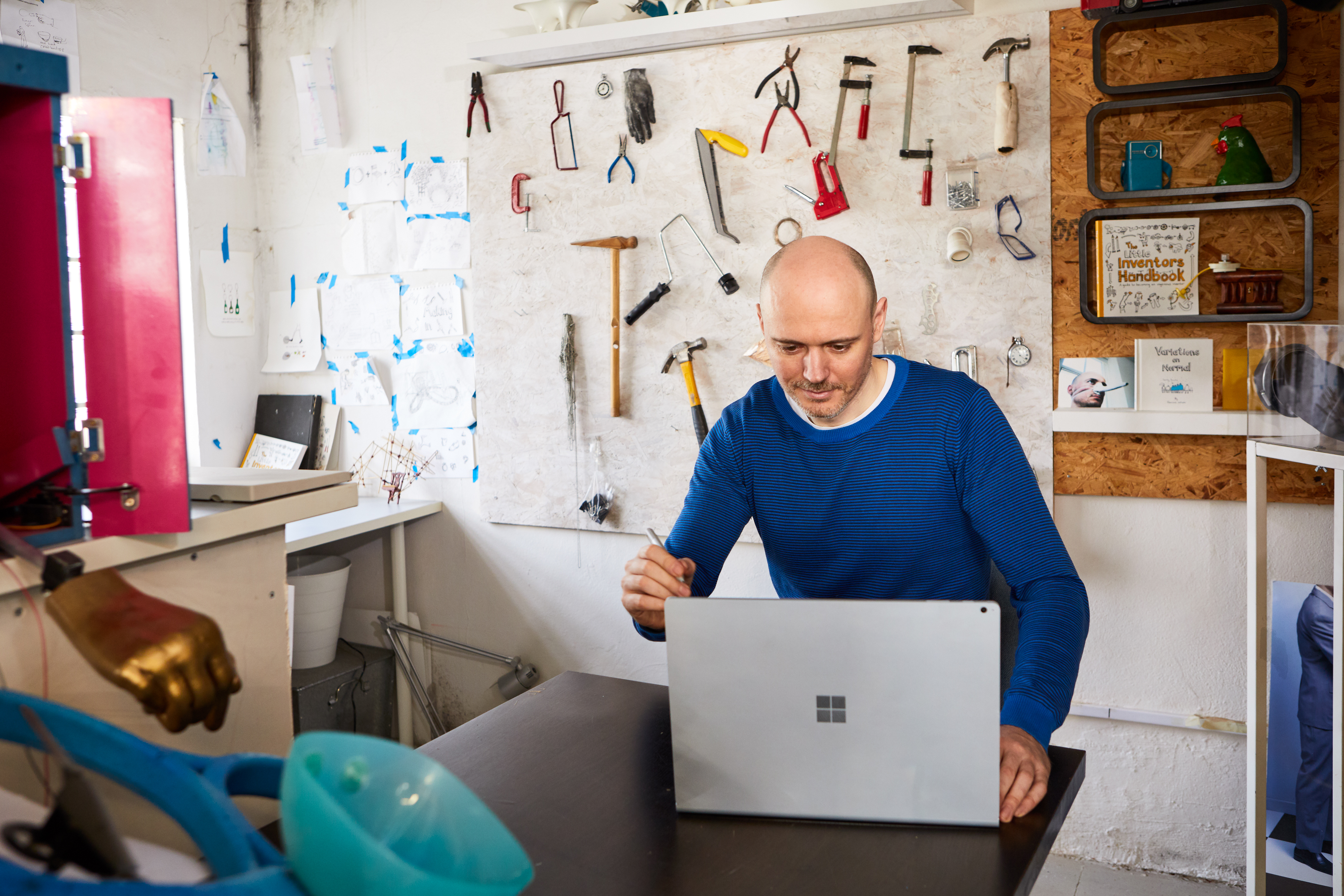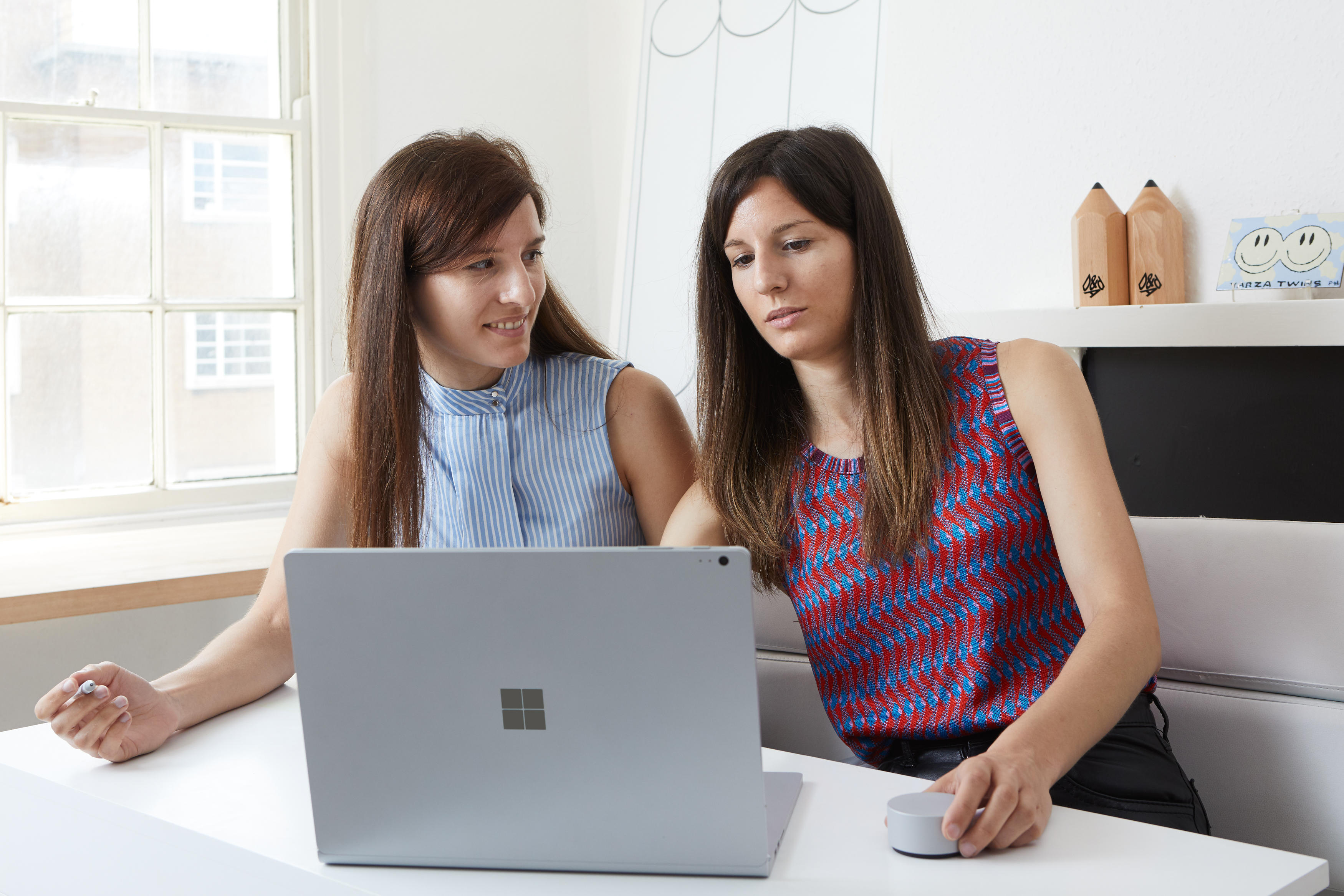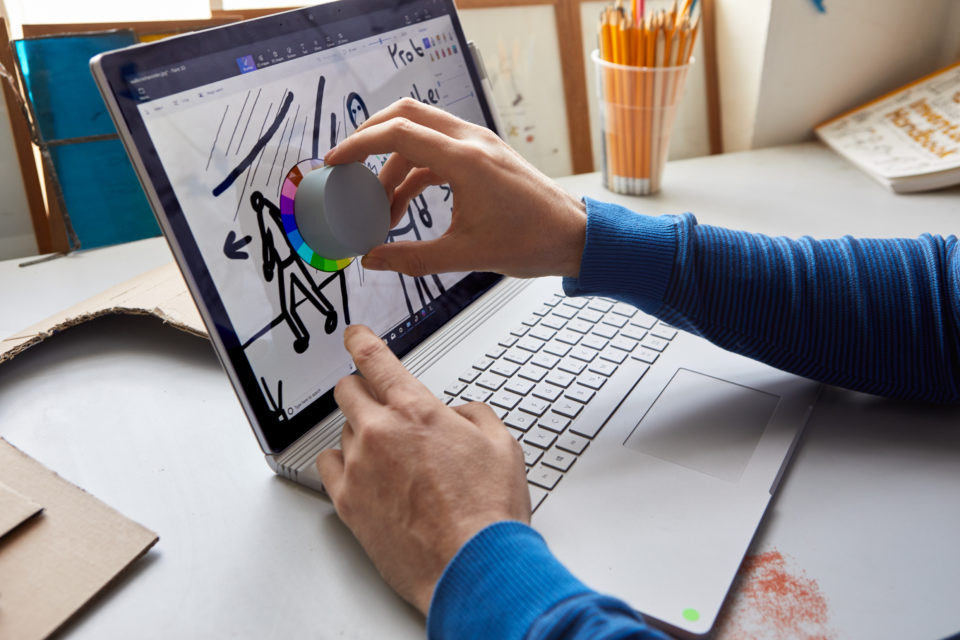According to the old English proverb, “necessity is the mother of invention”. This roughly means that some problems are so big and obvious that people will inevitably create solutions for them – the need to communicate resulted in phones, the desire to stay dry led to umbrellas, shoes prevented feet from getting sore.
But what about those everyday problems that don’t have clear solutions? How do you see over tall people at a concert? How do you know when to add more suntan lotion during those summer trips to the beach? How do you stop bumping into people in a busy street?
With the brightest minds in the world apparently stumped, Microsoft decided to take up the challenge and try to solve these everyday issues for the benefit of people everywhere.
The company enlisted the help of Dominic Wilcox, an inventor, artist and designer, and five creative experts, who were each given a Surface Book 2 and asked to create solutions to common problems.
Hattie Newman, a paper artist, wanted to help people spend time away from their mobile phones. She designed a small dog house for your phone that would block its signal, leaving the owner free to enjoy other hobbies without being disturbed by text messages, phone calls or social media updates.

Twin sisters Eva and Marta Yarza, who run The Yarza Twins design studio, wanted to help people know when to apply more suntan lotion. The answer? Sun cream that changes colour – when it turns blue, it’s time to add more.
Tom O’Meara, an animator, tackled a problem that most people have faced – forgetting to water your plants. His idea was a plant pot with legs, which would run to find water when the plant was thirsty.
Finally, illustrator Gaurab Thakali thought of a unique way of blocking out background noise in the office and helping people to focus – a small privacy pod that sits on your desk and covers you and your laptop.
Speaking from his London workshop, Wilcox, who has been inventing things since he was a teenager and created the world’s first pair of GPS shoes, said having technology at the core of the designing and building stages can be the key to creating something that will change people’s lives.
“Technology is modern-day magic,” he said. “It can transform the everyday into something that can contain a superpower. The GPS shoes can tell you where you are and where to go. I see that as like giving someone a superpower.

“I like to use technology in a subtle way, so it’s hidden in the background. The magic of technology is what it can enable you to do but you don’t necessarily need to see it.
“It’s nice to see the creators using technology to tackle real problems. Putting your phone in a box when you get home is a nice idea, it would be a moment of peace; while remembering to water my plants is definitely a problem for me as I regularly forget.”
As well as guiding and mentoring the five designers, Wilcox also used his Surface Book 2 device while “looking around for the little problems that we all have”. The two-in-one device became his sketchpad, and along with his pen and dial, he shaped his ideas for a coat that contained indicators and a pair of periscope glasses.
“When you’re walking along the pavement and someone’s walking towards you, you often don’t know which side to go to avoid them; and they don’t know which side to go, either. So, you both end up doing this little dance,” said Wilcox, who has a degree in graphic design and studied at the Royal College of Art. “I’ve made a jacket that has left and right indicators built into it, so you can press a button to make an arrow flash. It offers a bit more clarity without having to speak.
“I got another idea after going to a gig. I was standing and watching the music, and when I looked behind me I noticed a very small lady who couldn’t see anything on stage. I went home and created a wearable periscope that uses mirrors to help people see over things. It’s very lightweight and easy to use.”

All the solutions were showcased on the Microsoft stand at the D&AD Festival, one of the leading design events in the world, which was held in London recently. Celebrating the best in craft, creativity and culture, speakers included director Danny Boyle, musician Professor Green and presenter Lauren Laverne, while attendees took part in workshops and masterclasses from the world of advertising, art, design, fashion, film and more.
The Xbox Adaptive Controller, which makes it easier for people with limited mobility to play videogames, was awarded the prestigious Black Pencil in the Product Design category on the final night of the festival.
The groundbreaking controller has been recognised for its ease of use and simple design – the aim of most inventors. Wilcox added that his Surface Book 2 was a great example of this, as well as a huge help during his work over the past few months, as it allowed him to make connection between the words and drawings that he placed on the screen.
“Anything that shortens the time from having an idea to visualizing it is better for any creative person,” he said. “I do a lot of drawing, and the fact that you can just draw straight onto the screen is very quick and handy. It means I can keep the flow of creativity going rather than it being stopped and started. The Surface Book is very instinctive, it’s an all-in-one package, which is useful when you just having a quick, convenient idea. You can type something, then draw something, then adjust that. You can get your ideas out of your mind and turn them into something visual very quickly.
“You can also take the Book with you wherever you go, and the screen is detachable, which is nice if you don’t want to take the whole thing with you. It’s also handy that the pen magnetises to the side on the Book, because I’m always losing pens.”

As the three-day D&AD Festival drew to a close for another year, Wilcox pondered the future of design, and how technology will play a major part in creativity. After all, the next generation is growing up surrounded by gadgets and digital information.
“One of my projects is working with young inventors,” he said. “When I look through their drawings, there is a lot of technology in there; probably more so than when I was growing up.
“However, I think humans will always want to sense the human touch in something, so I think there’s value in technology and craft coming together. You can see that today with 3D printers. There is this coming together of the two sides in order to help creative people make their ideas become reality.
“That will lead to an increase in the demand for bespoke and customised items. I think technology is going to enable us to have our own versions of things, something unique, and to be able to adapt and customise items in the way that we want to.
“For example, I designed a stained-glass driverless car. That was a combination of a very old tradition and new technology. The idea was that technology will enable us to be very safe, so there will be no vehicle collisions. If that’s the case, then cars can be made from any material; they could even be handcrafted.”
While the reality of wooden cars remains a way off yet, there are other, smaller problems that today’s technology is helping to solve. Wilcox, Newman, O’Meara, Thakali and the Yarza sisters may have just used Surface Book 2 to make many people’s lives a lot easier. Mobile phone dog house, anyone?







